Toyota’s Tundra will soon be the only new half-ton truck that isn’t made by one of the Big Three – GM, Ford or Ram. Nissan is reportedly about to cancel the Titan, which was the only other full-sized truck (that isn’t a batter-powered device) not made by one of the Big Three.
That will leave the Tundra as the sold remaining alternative to the Big Three half tons.
And it’s that way in more than one way.
What It Is
The Tundra is Toyota’s full-size pickup. It competes with the Ford F-150, the Chevy Silverado 1500 and the Ram 1500 as well as – for another year, anyhow – the Nissan Titan (which hasn’t been updated since the 2016 model year).
It is the only half-ton truck currently on the market that does not even offer a V8 engine (the Titan still comes standard with one) and it’s the only one that comes standard with a twin turbocharged V6 and that offers a turbocharged V6/hybrid drivetrain that can take you more than 700 highway miles without stopping for fuel.
You can buy a new Tundra in either of two basic configurations: Double Cab with a 6.5 foot or an eight-foot bed. Or a Crew Cab with a 5.5 foot or a 6.5 foot bed. (The eight food bed isn’t available with the Crew Cab configuration.) From there you can decide which of several trims to go with – as well as whether to go with 2WD or 4WD.
Prices start at $39,965 for the base SR trim double cab 2WD with the short bed. Choosing the optional long bed bumps the MSRP up to $40,295. Adding 4WD raises the MSRP to $42,965.
Crew cab prices begin at $42,015 for the SR trim with 2WD and $45,015 for one with 4WD. 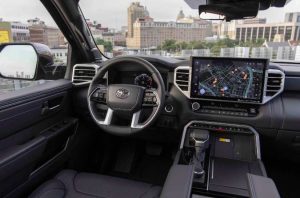
Crew cabs are also offered in four additional trims, including Platinum ($61,775), 1794 ($62,460), TRD ($72,130) and top-of-the-line Capstone ($78,845). Limited, Platinum and 1794 trims can be optioned with the V6/hybrid drivetrain that bumps the horsepower up from the otherwise standard 389 from the base twin-turbo 3.5 V6 to 437 and also increases the maximum tow rating from the standard 8,300 lbs. to 12,000.
What’s New For 2024
Limited trims Tundras can be ordered with an available with a Nightshade package similar in theme to the Nightshade packages available with other Toyota models, including the Camry sedan. It includes black-anodized 20 inch wheels and specific exterior colors/trim pieces.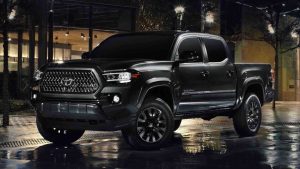
The Platinum trim can also be optioned out with a TRD Off-Road Package and all Tundras can be ordered from the factory with a three-inch lifted suspension. This was formerly a dealer-installed modification.
Also, the Platinum trim can be ordered with the TRD off-road upgrades in addition to that.
Finally, the output of the standard twin-turbo V6 has been increased to 389 horsepower (up from 348 previously) and there’s a new Terra paint scheme for the TRD Pro exclusively.
What’s Good
Standard V6 is stronger than some rivals’ optional V8s.
Optional V6/hybrid combo out-pulls some rivals’ V8s.
Prius-like driving range.
What’s Not So Good
No more V8 – even optionally.
No regular cab/eight foot bed option.
Like its rivals, the Tundra is a big truck. Compared with the 1500s of 20 or so years ago, these things are all super-sized trucks.
The Tundra used to come standard with a V8 – whereas V8s were generally optional in most of the Tundra’s rivals (excepting the Nissan Titan). It was a 5.7 liter V8 that made 381 horsepower (and 401 ft.-lbs. of torque) and it endowed the ’21 Tundra – last year for this engine – with a standard 10,100 lb. towing capacity.
It also got 13 MPG in city driving and 17 on the highway.
That might not have mattered much to Tundra buyers; after all, it’s a truck – not a Prius. And while it may not have gone very far on a gallon, the V8 Tundra could still go almost 500 highway miles on a tank – which is nearly as far as a Prius can go on a tank.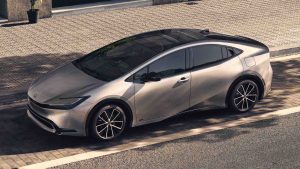
But its gas mileage did matter to Toyota.
Because it mattered to the government, which punishes car companies that offer for sale vehicles that use more gas than the government says they’re allowed to – irrespective of buyers’ indifference to gas mileage or their willingness to pay for the gas their vehicle uses. Never mind what buyers want. Heavy fines are levied on the car manufacturers for “noncompliance” and these make the vehicles the government thinks use too much gas more expensive to buy – serving as an incentive for the manufacturers to not build them.
And that’s why the Tundra no longer even offers a V8.
But it does offer two versions of the 3.5 liter, twin-turbo V6 that replaced the V8 when the Tundra was redesigned for the ’22 model year. And the standard version now makes more power – both torque and horsepower – than the old V8. Output has been bumped up from 348 horsepower last year to 389 this year – and the base V6 now makes 479 ft.-lbs. of torque vs. 401 for the old V8.
A ten speed automatic is standard.
Equipped with this engine, the ’24 Tundra’s mileage rises to 18 city, 24 highway – and its range goes up to 540 highway miles on 22.5 gallons of gas.
Oddly – given the power increase – the base Tundra’s maximum tow rating is only 8,300 lbs. – significantly less than the ’21 V8-powered Tundra’s standard 10,100 lb. max tow rating.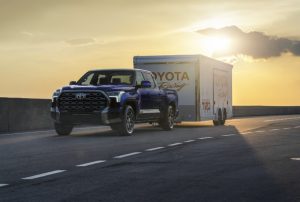
But that can be recovered by choosing the optional version of the 3.5 liter V6 (it’s standard in the top-of-the-line Capstone and off-road-ready TRD Pro) which offers 437 horsepower and 583 ft.-lbs. of torque. That’s diesel-torque, without the diesel. On account of the hybrid-assist of the battery pack and motors. It amounts to a similar thing in that electric motors – like diesel engines – make a lot of torque and almost immediately. This is also why the Tundra equipped with this drivetrain can pull more than the old V8-powered Tundra – up to 12,000 lbs.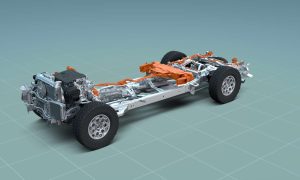
It’ll also travel 20 miles on a gallon of gas in city driving, according to the EPA – and 24 on the highway.
But the most startling stat is the range of this truck. It can travel almost 800 highway miles on a tankful (644 in the city) which is farther than a Prius.
And the Prius cannot pull 12,000 lbs.
Is it more important to have a V8? Or to have the power (and sound) of a V8?
The Tundra’s V6 more than holds it own against its rivals’ still-available V8s; floor it and see. And unless you looked under the hood, you probably wouldn’t believe that’s all there is under there. By ear, you’d think there was more – because Toyota offers a sound augmentation system that replicates the hearty start-up rumble of a 5.7 liter V8 (the old Tundra’s provides the soundtrack) as well as the comforting bass background burble you get when you’re driving a V8 truck, like the old V8 Tundra.
If you drive the V6/hybrid combo, you will sometimes hear nothing at all – as this one can move on battery power alone (engine off) at low speeds, as when backing up out of the garage. But otherwise, this V6 does a very convincing imitation of a V8.
Except when it comes to having to stop – to feed it.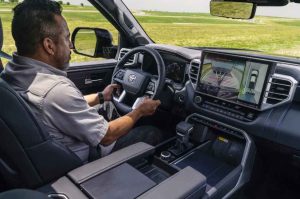
A truck with 437 horsepower that can pull 12,000 pounds that has a highway driving range in excess of 700 miles is almost as dumbfounding as a battleship that can fly. The government may have effectively forced Toyota (via regulations that have to be complied with) to retire the 5.7 liter V8. But Toyota did a more-or-less in-your-face (the government’s) by complying with the regs and delivering what customers want.
A V6 isn’t a V8 but here’s one that delivers the things most people want a V8 for – the power and the sound – with the added benefit of something more.
Of course, there is the increased cost for all of this. Back in ’21 – last year for the old V8-powered Tundra – you could buy one for $33,675 to start. But, when you adjust that for the Fed fleecing styled “inflation,” it comes out to the equivalent of $39,548 in today’s depreciated-value dollars. So, the new V6 powered Tundra actually only costs $400 more in real dollars (what they’ll buy, at any rate) than the ’21 Tundra did.
So – again – kudos to Toyota for figuring out how to give customers more for not much more.
Speaking of which . . .
The old Tundra’s axle was suspended by a pair of leaf springs; the new Tundra’s is multi-link and coil sprung. This greatly improves ride quality on potholed roads as well as washboarded gravel and dirt roads. This is a truck that doesn’t ride like one – even the tested (and lifted) TRD Pro version, with the knobby Falken all-terrain tires and heavy-duty off-road shocks.
It’s capable and it’s comfortable. It’s luxurious, to be accurate about it. Because that’s exactly what trucks have become – which is what big luxury cars once were. But because such cars aren’t made anymore (try and find anything new that’s a car that’s comparable to a ’70s Cadillac Sedan deVille, Olds 98 or Chrysler Newport) people who want something big and powerful and capable buy trucks.
It is why a truck – the Ford F-150 is the best selling vehicle in North America.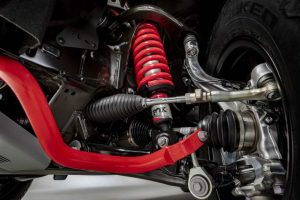
Another thing that separates this truck from today’s cars – and crossovers – is that you can see what’s around and behind you and not just because you’re higher up than they are. Trucks are still shaped like trucks and don’t have the blob butts that afflict modern cars and crossovers that have made it difficult to see what’s behind you (and sometimes, beside you) without the assistance of a camera.
The tested TRD Pro is a big – and tall – lug. The three inch lift puts its undersides more than a foot (12.3 inches) off the ground.
But all Tundras are long – and wide.
Whether you go with the standard Double Cab or the optional Crew Cab, the Tundra is longer than a ’70s-era land yacht car such as the Buick Electra 225. The Double Cab with the standard bed is 233.6 inches end-to-end and the Crew Cab stretches 245.6 inches or 20-plus feet end-to-end.
And all of them are 80.2 inches wide, not counting the mirrors.
And sometimes, there’s not enough room for all of that. In your garage, for instance. Or in between a pair of parked cars at the supermarket. The bed walls are also probably at last six inches taller than was typical when half ton trucks weren’t yet super-sized trucks.
This was circa the early 2000s . . .
The upside is this truck has more than enough room for five large adults. Legroom in the rear of the Crew Cab (41.6 inches) is more than the front seaters get in many new cars and only slightly less than those riding up front have. The width of the body allows ample room to the sides, too.
It’s true that the others in this class are similarly spacious and similarly luxurious, while also being comparably capable. But none of them offer the Prius-like capability to go without stopping for more than 700 highway miles at a stretch.
The Rest
Two things about the Tundra that can be deficits, depending on what you want – and what you may need. This truck is not available with a regular cab; not everyone wants the extra doors (and seats) Also, the truck’s bedwalls are as high as the walls of Jericho – or so it seems when you’re trying to reach what you put in there. This is thing with all new 1500s, though. So bring a ladder (if it’s not already built into the tailgate).
The other thing is the one thing – in terms of the Tundra’s engine. While it’s an impressive engine, the Big Three trucks are available with different engines; in the case of the F-150 and the Chevy Silverado, three or even four of them. Including -in some of them – a diesel engine. You may not need or want a different engine than the one the Tundra comes standard with.
But if you do, there’s no other choice.
The Bottom Line
Some of us miss the old V8 Tundra, which was a simpler truck and so more like trucks used to be. But the new Tundra shows how good a truck can be – even when it no longer comes standard with a V8.
. . .
If you like what you’ve found here please consider supporting EPautos.
We depend on you to keep the wheels turning!
Our donate button is here.
If you prefer not to use PayPal, our mailing address is:
EPautos
721 Hummingbird Lane SE
Copper Hill, VA 24079
PS: Get an EPautos magnet or sticker or coaster in return for a $20 or more one-time donation or a $10 or more monthly recurring donation. (Please be sure to tell us you want a magnet or sticker or coaster – and also, provide an address, so we know where to mail the thing!)
If you like items like the Safety Cult T shirt pictured below, you can find that and more at the EPautos store!



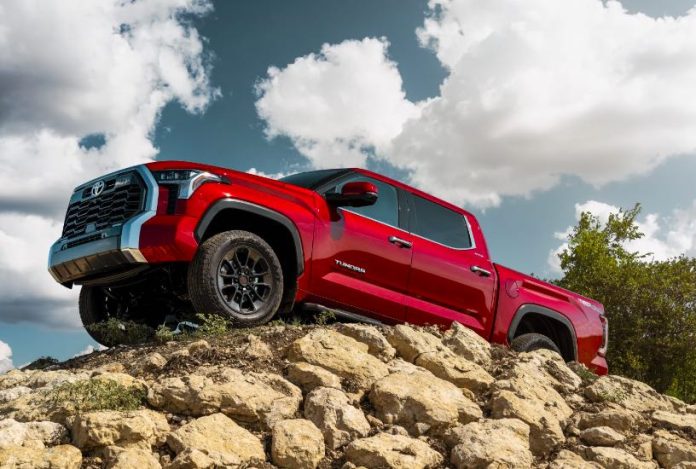




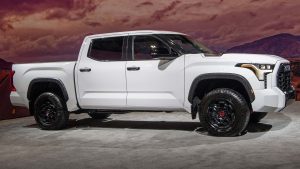







Good write up Eric, a Tundra is a consideration along with another new Ram, but Ram seats are the absolute worst seats of any vehicle ive ever owned. My issue is the low towing rating for the non-hybrid version Tundra to replqce my Ram. So likely I am still going to keep my stripped down, Ram 2017 long bed, 2wd 400hp, 8-spd hemi, best towing 1/2 ton gas engine setup ive used, i tow a tractor, car hauler and a 16×7 trailer a lot. But like i said the seats are the worst. i may buy another more plused up truck, for travel and light towing, with better seats etc…it sounds like the new Tundra might be a good option. Thanks for the info.
How are the Tundra seats compared to other trucks? Ive been meaning to go test drive one soon.
I own a grand cherokee trailhawk with a 3.0 turbo diesel and the manual tells you to let it cool for different times depending on highway, towing or around town use. IMO, Many people with turbos lose a lot of life as they dont let them cool. They stop, park, shut the engine off and dont let the coolant circulate while its not under load, thats why turbos crack often. Most owner manuals state this, but who reads that anymore? I also crack open the engine hood and let the heat vent out also. If Im stopping for a pee break or just running in the store, I just let it run. Eric any thoughts on that?
I don’t know much about diesel trucks, Bobsuruncle. That was an interesting comment about them you made there.
And, seats,… it really is surprising how bad some can be.
Reminds me of those hard plastic ones we were forced to sit in, in public co-ed goobermint prison/school.
Hi Bobsuruncle,
I hesitate in my reviews to comment about seat comfort unless it’s strikingly one way or the other, because it’s otherwise a very subjective and personal thing. I might find a given vehicle’s seat plush; someone else might find it squishy – and so on.
On the turbo – yes, I think it’s sound policy to let them cool down, especially if you own a model that doesn’t do this for you, automatically (some do; you have to check the specifics to see).
Thanks Eric, I didnt know that some automatically cooled the turbo. I understand about seating comfort comments. I am not a large guy, and a lot of seats in trucks seem to be made for the XXL crowd, no offense meant. The early 2000’s Chevy/GMC leather captains seats broke the mold.
Enjoyed the Tundra review. As I read I couldn’t help but wonder for low annual mileage drivers how many years the Capstone battery should last and what is the cost of replacing it? And does the added complexity of a hybrid/internal combustion engine make it more likely to have malfunctions? I am not sure if it is true or not, but I heard that towing to the max amount with a hybrid was not a good idea? Also, wondering if the auto-stop/start can be disabled if one chooses to do so? Thanks for the article and your website.
Hi Mario,
It’s hard to know ahead of time – as the hybrid Tundra is a new model. It takes a few years to suss out how a given model will perform in terms of reliability, etc. That said, hybrids in general have prove to be very durable. Unlike EV batteries, hybrid batteries never heavily discharge because the engine/system maintain their charge as the vehicle is driven; this eliminates the heavy discharge/recharge cycling that can shorten a battery’s life. Also, the hybrid battery is only partially responsible for providing the power to move the vehicle. Hybrids are favored as taxis and Ubers – and they regularly go 200,000-plus miles. My main concern as regards the Tundra would be the turbo’d V6.
Probably the nicest Tundra made to date. Nice write-up Eric.
I will absolutely consider it, if Ram doesn’t put their new Hurricane engine in soon enough.
I’ve driven the new Hurricane (non-HO version) in their Grand Wagoneer (rental) and it is very very nice (so is the Grand Wagoneer). I think better than the old Hemi (non blown). BUT, as I mentioned below, I will not own anything new and high-tech like this past 5-6 yrs.
Toyota has obviously been paying attention and the fact that they changed the rear suspension to multi-link with coil springs is huge, as Ram did a while ago.
And yes Eric, they are huge, but that’s what a lot of us want, like the old boats of the 70’s+. I will always buy the most powerful +/-, with the best ride and nicest interior, pickup avail.
Currently Ram wins for me, but I haven’t driven the new Tundra yet either. The Tundra also looks the best they’ve made to date, with the exception of the too large grill.
Thanks, Chris!
They just took it away. I will miss it. So many dalliances. But so much fun!
If you crash and it is a write off…where does it go?
2018 Ford Fusion Hybrid, with 75,000 miles on the odometer, got rear-ended…. bought the vehicle from a rental car company in February 2020 with 35,000 miles on it for about $15,000, before used-vehicle prices began to spike
The insurance adjuster looked at the vehicle for 10 minutes and totaled it….The insurance company offered us nearly $18,000 for the vehicle that we’d bought for $15,000 three-and-a-half years and 40,000 miles earlier. Normally, that vehicle might have been worth $10,000.
An auction company picked it up……..,. It’s common that such vehicles are purchased to be exported to a cheap-labor country, often in Central Asia, to be repaired with cheap but highly skilled labor and cheap parts, and for this then creampuff to be sold for a nice price in one of the Gulf states or elsewhere in that part of the world.
https://wolfstreet.com/2023/10/09/our-experience-with-the-collapse-of-the-dollars-purchasing-power-for-used-cars-auto-insurance-repair-costs-and-rental-cars/
Hi Anon,
Wrecked cars also get parted out and there can be a lot of money in that, too. The prices at some salvage yards have become extortionate.
I’m sure the first owners will get a great experience. But what about the guy who owns it when it’s 15-20 years old? Will it be going strong? Or will the turbo’s put these trucks in the junk yard before then?
Granted Toyota has a better track record than most, but it’s still a turbo. I think if Toyota wants to stay in this business (it may not be able to) they will have to offer a V8 again. I am guessing this is the last generation unless sanity prevails soon.
I don’t think the new crop of any vehicles is smart to own past 10yrs. IMO.
I personally don’t go past 5 or so.
Almost $80 grand for the top-of-the-line, which gets you all the stuff you want if you want a truck and a lot of extra fru-fru that just gets dirty and smelly? And I have to take an unproven (in the long term) drivetrain? Toyota can keep it, just as I’ll keep my old trucks. Yeah, I’ve dropped a good bit on maintenance the last couple of years, but nothing like that kind of money.
And nothing tows like a big block in my book. Not even a diesel.
As an owner of the previous generation, I do chuckle a bit when I think of Toyota using the sound of my truck’s V-8 to fool the ignorant into thinking there are more than 6 cylinders under the hood. I am highly skeptical that this truck will last as long as mine will.
I’ve got more than 150K on my truck and it’s been as reliable as they come. The rumble from the V-8 is very nice, especially with an aftermarket exhaust. Towed my Supra to a car event in Mississippi and could pass slower traffic without any issues.
I also am not a huge fan of the styling. The grill is monstrous and there are too many weird bulges and other panel lines that remind me of an 80s Pontiac Bonneville with all of that silly body cladding.
There is no turbo that could outlast a solid V8.
I wish Toyota made a heavy duty truck. The longevity of their vehicles is great, but I’m not sold on turbo engines going 300,000 miles yet.
when it’s time for my next truck in many years, if Toyota still makes trucks, and they prove a long lifespan, this would do for me at 12,000 lbs of towing, but I can currently get a Silverado 2500 custom for $55,000 that tows more.
If you want it to last 300,000 miles
Lay off the gas pedal (I.e. keep the turbo boost to a minimum).
Digital dash — it’s the first thing I noticed in the video, while suppressing an involuntary gag and dry heave.
There’s a reason why a nine-thousand-dollar Rolex Datejust has tiny metallic hands, not a cheap ‘n nasty LCD display. So why does a vehicle that costs five times more feature garish electronic ephemera that you’ll have to stare at for thousands of miles?
Then there’s the elephantine aspect: a 2024 TRD Pro 4×4 CrewMax with 5.5-foot box has a 145.7 inch (that’s 12 ft 1.7 in) wheelbase and weighs over 6,000 lbs.
In the legendary land yacht days, when the Electra 225 ruled the roads, its 4,200-pound weight was considered generous, verging on porky. Now the Deuce and a Quarter would be considered svelte; a wasp-waisted anorexic ballerina compared to today’s monster trucks.
Like the dinosaurs, land yachts are extinct. One suspects that monster trucks soon will be too, though we can’t yet identify the lethal asteroid — regulators, oil shock, inflation — that has their name on it.
I won’t be ’round this old town
Anymore for a long long time
Gonna hit the road and start looking for the end of that long white line
Tell ’em I’m somewhere looking for the end of that long white line
— Sturgill Simpson, Long White Line